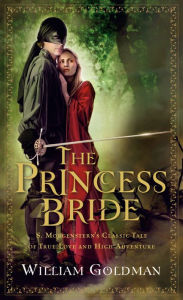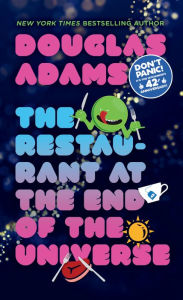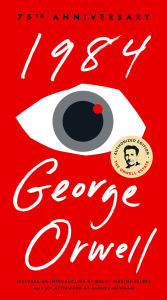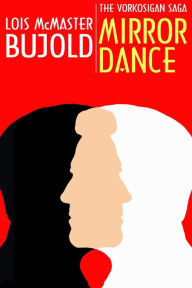The Most Fiendish Torture Devices in SF/F
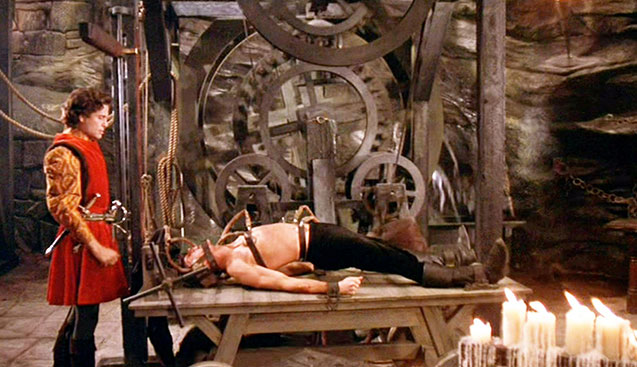 Science fiction and fantasy lift us up, showing us marvelous worlds fired by pure imagination, encouraging us to dream of a better future or a more magical existence… except when they descend into horrific descriptions of torture and sadistic devices that almost break your will just by reading about them. In fact, some of the greatest torture devices ever imagined come straight from speculative books. Here are horrific inventions that are terrible in their imagination, straight from some of our favorite works of SF/F.
Science fiction and fantasy lift us up, showing us marvelous worlds fired by pure imagination, encouraging us to dream of a better future or a more magical existence… except when they descend into horrific descriptions of torture and sadistic devices that almost break your will just by reading about them. In fact, some of the greatest torture devices ever imagined come straight from speculative books. Here are horrific inventions that are terrible in their imagination, straight from some of our favorite works of SF/F.
The Princess Bride: S. Morgenstern's Classic Tale of True Love and High Adventure
The Princess Bride: S. Morgenstern's Classic Tale of True Love and High Adventure
Paperback $10.99
The Life-Sucking Machine in The Princess Bride, by William Goldman
The Princess Bride is a tale of hilarious humor, brave deeds, true love… and perhaps the worst torture device ever conceived. In the book, Count Rugen’s torture of Wesley begins by forcing him to stare at the machine, which he hasn’t explained, for a full day. Then he actually uses it, literally sucking away one year of his captive’s lifespan. The intense agony—which makes Wesley “cry like a baby”—is bad enough, but the psychological impact of knowing that you will now live one year less is even worse, especially because none of us know how long that will be in the first place. Torture Rating: 4 out of 5 Screams.
The Life-Sucking Machine in The Princess Bride, by William Goldman
The Princess Bride is a tale of hilarious humor, brave deeds, true love… and perhaps the worst torture device ever conceived. In the book, Count Rugen’s torture of Wesley begins by forcing him to stare at the machine, which he hasn’t explained, for a full day. Then he actually uses it, literally sucking away one year of his captive’s lifespan. The intense agony—which makes Wesley “cry like a baby”—is bad enough, but the psychological impact of knowing that you will now live one year less is even worse, especially because none of us know how long that will be in the first place. Torture Rating: 4 out of 5 Screams.
The Restaurant at the End of the Universe (Hitchhiker's Guide Series #2)
The Restaurant at the End of the Universe (Hitchhiker's Guide Series #2)
In Stock Online
Paperback $10.00
The Total Perspective Vortex in The Restaurant at The End of the Universe, by Douglas Adams
Another soul-destroying concept in an otherwise lighthearted story, Adams’ TPV has a deceptively clever premise: it simply demonstrates to the victim, without any room for doubt, their proportional existence. In other words, it demonstrates how small and unimportant you are as an individual in the context of the entire universe, a revelation so crushing, most of us spend our whole avoiding thinking about it. While its use in the story doesn’t work out as planned due to a few incredibly complex plot twists, the mere idea that this machine might exist in some parallel universe is difficult to bear. Torture Rating: 5 out of 5 Screams.
The Total Perspective Vortex in The Restaurant at The End of the Universe, by Douglas Adams
Another soul-destroying concept in an otherwise lighthearted story, Adams’ TPV has a deceptively clever premise: it simply demonstrates to the victim, without any room for doubt, their proportional existence. In other words, it demonstrates how small and unimportant you are as an individual in the context of the entire universe, a revelation so crushing, most of us spend our whole avoiding thinking about it. While its use in the story doesn’t work out as planned due to a few incredibly complex plot twists, the mere idea that this machine might exist in some parallel universe is difficult to bear. Torture Rating: 5 out of 5 Screams.
1984: 75th Anniversary
1984: 75th Anniversary
By
George Orwell
Introduction
Dolen Perkins-Valdez
Afterword
Sandra Newman
In Stock Online
Paperback $12.00
Every Single Thing in 1984, by George Orwell
Orwell’s masterpiece never gets old, in part because every year seems to bring us inevitably closer to the totalitarian hell it describes. While anyone who has read it remembers what happens in the infamous Room 101 in the Ministry of Love (especially the rats… omg the rats), it should be noted that everything in the book is basically a torture device of some kind. Winston Smith’s mere existence is a form of psychological torture that completely encompasses him and never ends. From the resistance movement that isn’t, to the slight bits of freedom he’s allowed by the government specifically so his failure and torture will have a more devastating impact, Orwell imagines a torture device that isn’t simply a device, but an entire society. Torture Rating: 6 out of 5 Screams.
Every Single Thing in 1984, by George Orwell
Orwell’s masterpiece never gets old, in part because every year seems to bring us inevitably closer to the totalitarian hell it describes. While anyone who has read it remembers what happens in the infamous Room 101 in the Ministry of Love (especially the rats… omg the rats), it should be noted that everything in the book is basically a torture device of some kind. Winston Smith’s mere existence is a form of psychological torture that completely encompasses him and never ends. From the resistance movement that isn’t, to the slight bits of freedom he’s allowed by the government specifically so his failure and torture will have a more devastating impact, Orwell imagines a torture device that isn’t simply a device, but an entire society. Torture Rating: 6 out of 5 Screams.
Mirror Dance (Vorkosigan Saga)
Mirror Dance (Vorkosigan Saga)
In Stock Online
eBook $6.99
Mirror Dance, by Lois McMaster Bujold
There isn’t one device or technique employed on Mark, a clone of Mile Vorkosigan, when he falls into the hands of Baron Ryoval; over the course of five days, he is subjected to a series of incredibly awful tortures and devices that have the effect of splintering his personality into several distinct sub-personalities, three of which—representing his physical appetites—band together to protect his true personality, while a fourth waits in the shadows for a chance to murder someone. Since one of the three personalities is a masochist, this has the effect of Mark appearing to enjoy the horrifying torture—which makes the whole sequence kind of a squicky experience for the reader, making it even worse. Torture Rating: 3 out of 5 Screams.
Mirror Dance, by Lois McMaster Bujold
There isn’t one device or technique employed on Mark, a clone of Mile Vorkosigan, when he falls into the hands of Baron Ryoval; over the course of five days, he is subjected to a series of incredibly awful tortures and devices that have the effect of splintering his personality into several distinct sub-personalities, three of which—representing his physical appetites—band together to protect his true personality, while a fourth waits in the shadows for a chance to murder someone. Since one of the three personalities is a masochist, this has the effect of Mark appearing to enjoy the horrifying torture—which makes the whole sequence kind of a squicky experience for the reader, making it even worse. Torture Rating: 3 out of 5 Screams.
The Metamorphosis, In the Penal Colony and Other Stories
The Metamorphosis, In the Penal Colony and Other Stories
By Franz Kafka
In Stock Online
Paperback $16.00
The Machine in In The Penal Colony, by Franz Kafka
Kafka’s stories are bleak examinations of the most horrifying, absurd aspects of our existences, usually communicated through a narrator whose detachment and numb affect imply that everything around them has been so horrible for so long, they’re not even slightly shocked at what’s happened, whether it’s waking up as a giant roach or being trapped in a bureaucracy that would make the DMV seem efficient. The Machine he describes in this classic story is a combination torture device and execution system that carves the convicted prisoner’s crimes into their skin over a twelve hour period that ends with their death. What makes it even worse is the tone of nostalgia the officer describing it uses after the penal colony’s new commandant deprecates it and orders it not be used any more. Describing the nearly-religious experiences the prisoners have while being tortured, the officer brings home the banality of evil in a way a more hysterical prose style couldn’t manage. Torture Rating: 4 out of 5 Screams.
The Machine in In The Penal Colony, by Franz Kafka
Kafka’s stories are bleak examinations of the most horrifying, absurd aspects of our existences, usually communicated through a narrator whose detachment and numb affect imply that everything around them has been so horrible for so long, they’re not even slightly shocked at what’s happened, whether it’s waking up as a giant roach or being trapped in a bureaucracy that would make the DMV seem efficient. The Machine he describes in this classic story is a combination torture device and execution system that carves the convicted prisoner’s crimes into their skin over a twelve hour period that ends with their death. What makes it even worse is the tone of nostalgia the officer describing it uses after the penal colony’s new commandant deprecates it and orders it not be used any more. Describing the nearly-religious experiences the prisoners have while being tortured, the officer brings home the banality of evil in a way a more hysterical prose style couldn’t manage. Torture Rating: 4 out of 5 Screams.
The original The Wicker Man remains one of the most chilling movies of all time, and should be watched by any horror fan despite its dated style. The 2006 remake, written and directed by Neil Labute and starring Nick Cage, is none of those things, but it does contain perhaps the greatest scene of over-acting in Cage’s career—and that’s saying something. You know the one. Not the bees, indeed.
There you go—torture devices that make you think, make you laugh, and lie awake at night, staring into the void.
